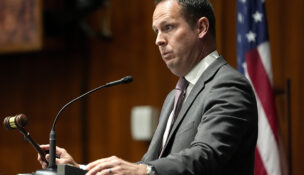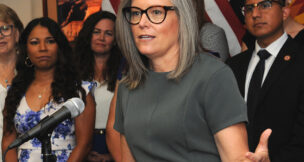Republicans unveil House bill to ban statewide photo enforcement
Arizona Capitol Reports Staff//January 14, 2009//[read_meter]
Republicans unveil House bill to ban statewide photo enforcement
Arizona Capitol Reports Staff//January 14, 2009//[read_meter]
Three Republican state representatives have banded together to introduce a bill to end the state's use of photo-enforcement systems on Arizona highways, calling a press conference Jan. 14 to announce the measure's filing...
No tags for this post.

















